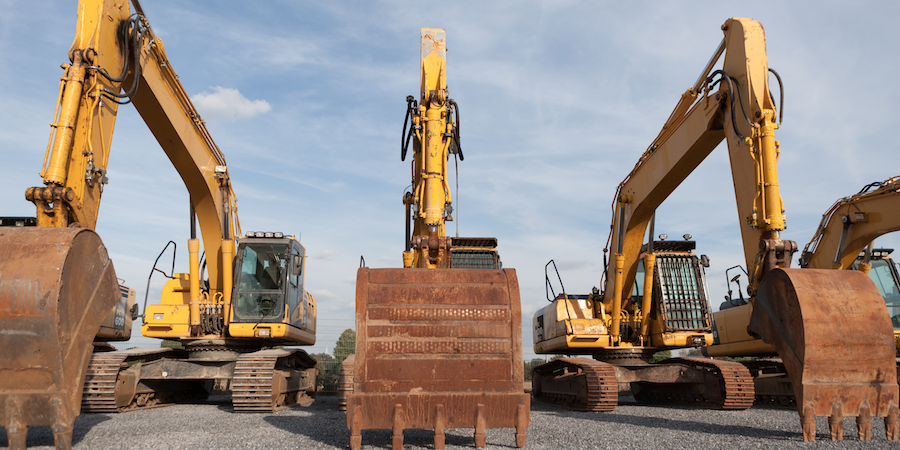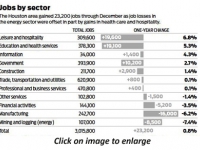Click on image to view more information.Construction employment rises, but unevenly, in January; metro job gains are spottyEditor’s note: Construction Citizen is proud to partner with AGC America to bring you AGC Chief Economist Ken Simonson's Data DIGest. Check back each week to get Ken's expert analysis of what's happening in our industry.The value of nonresidential construction starts, not seasonally adjusted, increased 13% from January 2015 to January 2016, CMD reported on February 11, based on data it collected. Building starts climbed 8.5%, with institutional starts up 2.6%, commercial up 13% and the small industrial segment up 10%. Heavy engineering starts jumped 20%, with the largest segment, road/highway, jumping 39%.The Federal Highway Administration's National Highway Construction Cost Index, a measure of prices paid by state transportation departments for all roadway construction contracts, decreased 2.4% in September 2015 from June and 1.7% from September 2014.
Reshaping the Construction Industry
The battle to rein in the scourge of worker misclassification in the construction industry continues to play out at the national level and in state legislatures. As Construction Citizen readers are well aware, worker misclassification happens when employers intentionally pretend they have people working for them as subcontractors when, by law, those very people should be classified as employees and compensated as such.It’s important to note that there are many legitimate uses of contract labor. The IRS has guidelines in place for who can and cannot be a subcontractor.Unscrupulous business owners who misclassify workers do it as an easy way to avoid hourly wages and benefits like health insurance and retirement plans. Business owners who follow the rules – and that means the letter of the law – are at a disadvantage because those who cheat the system can underbid ethical companies by as much as roughly 30 percent when competing for work.
February 16, 2016
The following article originally appeared in the February newsletter to clients of Kiley Advisors, LLC. Reprinted with permission.The increasing realization that talented people are truly the strategic separator for successful construction companies is significantly changing how HR initiatives are developed and executed. The leadership of this activity has moved to the executive suite (the C-Suite in magazine jargon), because a growing amount of resources are being strategically deployed to ensure the company is a winner in the escalating “war for talent.”It has been interesting to watch the change in this function over the years, and the respect it has steadily gained. It has moved from being the ancillary responsibility of the payroll clerk, who worried about paperwork, through the Personnel Manager phase, where the concerns were about process, to the Human Resource Director phase where policies became the concern.
February 15, 2016
Women account for 19 percent of the total employment in the combined oil and gas, and petrochemical industries, according to a report from the American Petroleum Institute. Meanwhile, it's projected that petrochemical refineries will need to replace up to 40 percent of their current employees over the course of the next decade due to plant expansions and an aging workforce.Nine Texas Gulf Coast community colleges, working as the Community College Petrochemical Initiative (CCPI), will address these issues and more during the Women in Industry: Petrochem Conference on Friday, Feb. 19.Women in Industry is a one-day conference for women interested in well-paying career positions in the petrochemical industry. It is scheduled for Friday, Feb. 19, at Hotel Galvez in Galveston.Attendees will hear from women already working the industry about actual job experiences, how to best prepare for these careers, what training is required, and how to network with other women while on the job.
February 12, 2016
The following article originally appeared in the February newsletter to clients of Kiley Advisors, LLC for the purpose of providing the latest leading indicators and industry issues to those clients. Reprinted with permission.As the year-end numbers come in, Houston is beginning to noticeably slow down. After gaining more than 100,000 jobs in 2014, in 2015 Houston managed to only add 23,200 – a number that will likely be revised down by the Texas Workforce Commission in the months ahead. As Dr. Gilmer noted this past November, the word is now out that the jobs are no longer in Houston, setting our city up for another slow year. For construction, it typically can take two to three years to feel the full impact of a market change as sudden as Houston has experienced in the energy sector. As such, 2016 – and especially the first half of 2016 – appears to remain robust.
February 11, 2016
We have reported several times on the progress of the new Foster + Partners designed Apple Campus 2 and its planned schedule to open in early 2017. The dream of Steve Jobs that achieved council approval in 2011 is entering the final stages of construction, according to the latest Duncan Sinfield shot drone video featured in the Fast Company blog site.It is annotated so that you can begin to see the exterior finishes, the solar arrays on the parking garages and the roof of the underground auditorium.You can see the installation of the 84-foot long sections of glass that will enclose the perimeter of this outstanding structure and provide space for the 13,000 employees that will work there when it is completed.
February 10, 2016
Click on image to view more information.Construction employment rises, but unevenly, in January; metro job gains are spottyEditor’s note: Construction Citizen is proud to partner with AGC America to bring you AGC Chief Economist Ken Simonson's Data DIGest. Check back each week to get Ken's expert analysis of what's happening in our industry.Nonfarm payroll employment increased by 151,000, seasonally adjusted, and by 2,665,000 (1.9%) for the year, and the unemployment rate fell to 4.9%, the Bureau of Labor Statistics (BLS) reported today. Construction employment rose by 18,000 for the month (to 6,615,000) and by 264,000 (4.2%) year-over-year (y/y). Industry employment reached the highest level since December 2008. Residential construction employment (residential building and specialty trade contractors) increased by 20,100 for the month and 149,500 (6.2%) y/y. Nonresidential employment (nonresidential building, specialty trades, and heavy and civil engineering construction) fell by 2,300 for the month and rose 2.9% y/y. The disparity may reflect the ongoing rise in residential spending and downturn in nonresidential spending in the last half of 2015 that the Census Bureau reported on Monday.
February 09, 2016
Calling it a "revolution" in education, Texas Lt. Gov. Dan Patrick on Friday laid out plans for what he called a "statewide model" for Pathways in Technology Early College High School, or P-TECH. The idea is focused on targeting workforce-ready partnerships between K-12, higher education and industry.The program has been growing and allows students to earn a high school diploma and an associate’s degree in six years with a much higher rate of completion.Speaking at Lone Star College in Houston, Patrick said students will benefit from the guidance of business community mentors and graduates of the program will be first in line for interviews for good-paying jobs. The effort, Patrick said, is meant to build on sweeping education reforms passed by the Texas Legislature in 2013 under House Bill 5, which created multiple pathways for students to earn a high school diploma.
February 08, 2016
Safety is all around us, and it is not just something you practice at work. There are hazards all around us. From everyday tasks, such as plugging in your devices into the outlet, to toys or clothes on the floor. Safety should be something we practice every day. It should be a part of our culture. Cutting corners can lead to catastrophic consequences and can ruin someone’s life in an industrial or construction setting. It can also cost your company a ton of money, not to mention having your reputation tarnished. Companies have become more safety oriented with time, but there are still people out there who are willing to sacrifice safety just to gain that almighty dollar. There are some who preach safety on one end and speak a different language on the other end. With that being said, it is always good to have a refresher in some of the basic safety topics. There are training modules in place to help those coming into the industry and modules to remind those that have been in the industry for awhile.
February 05, 2016
Click on image to view more information.Construction spending inches up in December; pay accelerates; 44 states, D.C. add jobsEditor’s note: Construction Citizen is proud to partner with AGC America to bring you AGC Chief Economist Ken Simonson's Data DIGest. Check back each week to get Ken's expert analysis of what's happening in our industry.Construction spending in December totaled $1.117 trillion at a seasonally adjusted annual rate, 0.1% above the downwardly revised November rate and 8.2% higher than a year before, the Census Bureau reported on Monday. However, all of the growth for the year occurred in the first seven months. The December total was just 0.2% higher than in July. The full-year total, $1.097 trillion, was the highest annual level since 2007 before adjusting for inflation but was still 5.5% short of the 2006 record. Spending patterns diverged widely by segment and time period. Private residential spending increased by 0.9% for the month and 8.1% year-over-year (y/y). In contrast, private nonresidential spending slumped 2.1% for the month to a level lower than in May, although it was still up 12% y/y. Public construction increased 1.9% and 3.9%, respectively. New multifamily construction jumped 2.7% and 12%; new single-family construction gained 1.0% and 8.7%; and residential improvements rose 0.1% and 5.8%. Most private nonresidential segments decreased for the month but rose y/y.
February 04, 2016



.jpeg?itok=6uFZXEBH)





.jpeg?itok=4Vi_1nJG)
































